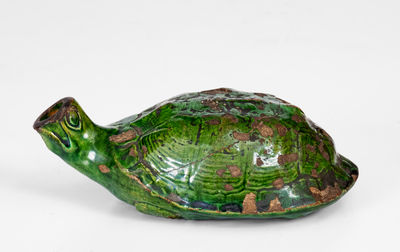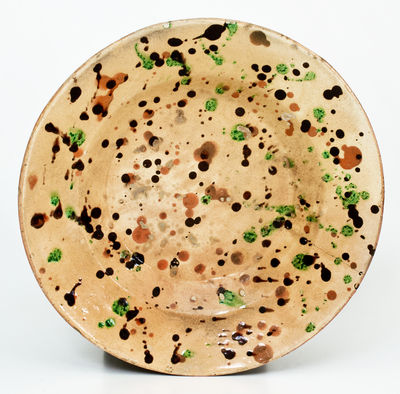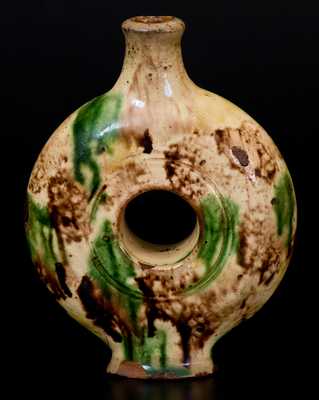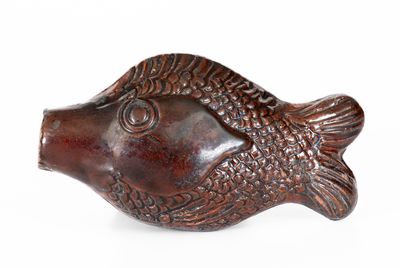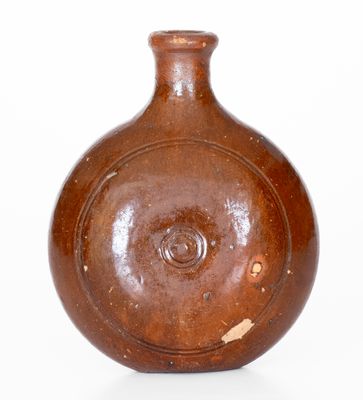Extremely Rare Moravian Redware Bottle with Tortoiseshell Glaze, Salem, NC origin, late 18th or early 19th century, wheel-thrown, ovoid form with long, narrow spout and rounded mouth, the surface dipped in cream-colored slip and profusely-decorated vertical columns of copper and manganese sponging under a clear lead glaze. The form and recessed underside suggest it was based upon imported European glass bottles of the period. This recently-surfaced bottle is the only example of this form and glaze produced in the North Carolina Moravian tradition that we are aware of; as such, it is a significant addition to a relatively-large body of documented Moravian school drinking vessels known, the majority of which are molded animal forms. This bottle was possibly produced before the popularization of such pieces. Literature: Two North Carolina redware bottles, which are loosely-related in form, are documented. One is a slip-decorated example made in Alamance County, NC, circa 1790-1820, illustrated in Beckerdite, Brown, and Linda Carnes-McNaughton, "Slipware from the St. Asaph's Tradition," Ceramics in America 2010, pg. 16, fig. 2. The second is a dark, copper-glazed bottle made in Salem, NC, circa 1780-1820, in the collection of the Museum of Early Southern Decorative Arts, Winston-Salem, NC, which is illustrated in Bivins, The Moravian Potters in North Carolina, pg. 121, fig. 52. Provenance: Al Marzorini Collection; Crocker Farm, Inc., March 24, 2018, lot 25. Areas of exfoliation throughout. H 7 1/2".









